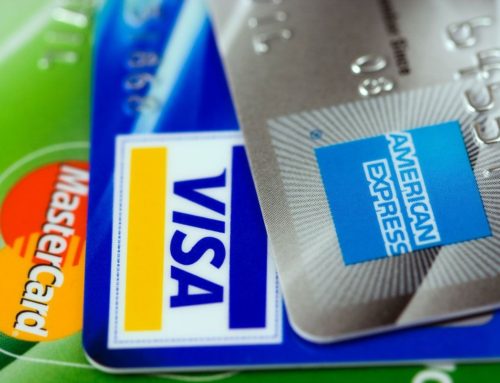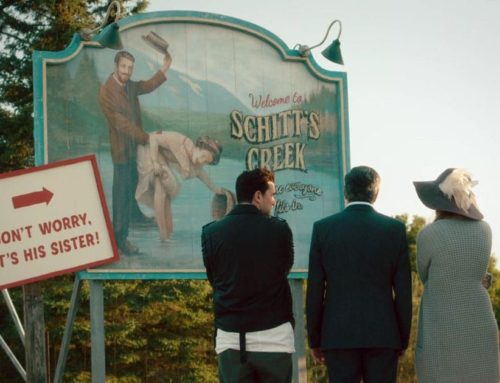Remember the stress of having no money?
Maybe it’s a current reality for you and you don’t have to think back too far.
Every time I’m in that situation my immediate thought is to get a job. Or to look around the house for the things I can sell for quick cash. It’s an emotional roller coaster for sure.
In Season 1, Episode 4 of Schitt’s Creek David Rose needs money and decides he should sell off some of his clothes. Here’s a guy who never wears the same thing twice and has A LOT of clothing. It’s a funny episode, but it brings up some very important lessons: time for money, production, and assets.
Time for Money
There will ALWAYS be a cap on what can be earned if you trade time for money.
The easiest way to create revenue is to trade your time for money. For 99% of the jobs in the world this is what happens. The employer has a problem that needs solved or a task to be done. You agree to work for this employer at a given rate (dollars per hour). Sometimes the employment is temporary, such as a job with one clearly defined task—like a performance gig. At other times the employment can be ongoing. This is especially true when the tasks keep repeating or there is a continuous series of new tasks. In that case think of factory work, retail, restaurants, or education.
There are only two ways to increase your income when you trade time for money. The first is to work more hours. But this leads to the biggest problem with trading time for money and that is that we only have a fixed amount of time. And everyone has the same fixed amount.
The other way is to increase the rate of pay per hour. That’s good if you can get it. Minimum wage laws help, but they also have perverse consequences including increased unemployment. The only way to negotiate higher wages is to provide ever increasing value to the employer. This is why manager’s and other leaders are paid more than simple laborers no matter what industry you’re in. This is equally true for entertainment, hospitality, education, manufacturing or just about any other sector of the economy you can think of.
Creatives of all types generate revenue by trading time for money all the time. Almost all forms of teaching, performing, and even creating fall under this category. There is nothing wrong with it. But you need to recognize it’s limits. There will ALWAYS be a cap on what can be earned if you trade time for money.
In this episode of Schitt’s Creek David wasn’t trying to sell his time for money—he actually does that later in the series in Season 2, Episode 5. Instead, he is taking an object he already owns and choosing to monetize it. Which leads to problems of Production.
Production and Assets
Many creatives live in this hybrid space where we partially own the means of production, but not all of it.
Yes, David had a lot of clothes he could sell. You might have a lot of something you can sell, too. Eventually both David and you would reach a point where there were no more items to sell. David was not selling an asset, he was merely acting like a retailer transferring ownership of a good from one person to the next.
The only way David could solve this problem is if he owned the means of producing the clothing. Then he would be able to produce as many articles of clothing as his resources allowed. The clothing itself is not the asset. The asset is the tools, machines, factory, and business that produce the clothing.
To use Robert Kiyosaki’s phrasing, an asset is something that puts money into your pocket. Just because David owned an enormous amount of clothing those clothes were not assets. In fact, they were liabilities because they took money out of his pocket. They took money out of his pocket because once he owned them they needed to be stored (which takes space); needed to be washed (which requires access to water, soap, and hopefully a washing machine); and depreciated (he will never be able to sell them for the price he paid for them because they’re used and styles change).
Creative people have problems of production as well.
Many creatives live in this hybrid space where we partially own the means of production, but not all of it. Musicians and other performing artists can create a nearly infinite set of experiences (i.e., concerts, recordings, scores, etc.), but unless we own the venue in which those are produced (i.e., the concert hall, the record manufacturing company, the printing shop) we only partially own the means of production.
This can be such a frustrating part of generating revenue that many creatives give up. We toss in the towel and give away our music for free, sign away the rights to what we create, and seek out more ways we can trade time for money.
The creatives I have met or interviewed that are generating the highest amount of income are those that control both their assets and the means of production.
Using your assets to generate income can lead to much more income and time freedom than trading time for money. Even if you don’t own all the means of production. For instance, a composer could maintain ownership of all the rights associated with their music, but still sell the asset through distribution channels that take a cut. For scores, this is what happens when you sell your music on SheetMusicPlus.com or jwpepper.com. For recordings, this is what happens when you sell your music on bandcamp.com or allow it to be streamed on Spotify.
If you want to maximize the use of your assets you have to also own the means of production, which means the printing and duplicating tools, machines, and technology to make the goods for sale in the examples mentioned above. This is when owning a $1,500 laser printer makes sense. And having a website with a full store front can make a big difference on your bottom line.
There are multiple downsides to this too, but I’ll save them for a different post.
The Long and Short
If you want to make the most money you can making your art you need to stop trading your time for money and you need to start creating assets.
If you want to make the most money you can making your art you need to stop trading your time for money and you need to start creating assets. Stop treating the things you create, whether they are physical, digital, or even just ideas, as commodities to be sold. Instead, begin thinking of them as assets that can produce other goods, or can be replicated as a good. You can read some more of my thoughts on that here and here.
By the end of the episode David decides not to sell his cloths. Primarily because he wasn’t going to get anything for it and he walks off in disgust. He thought he had something valuable, but in the market he was in there were no buyers. No matter what you’re selling—it could be time, or the production of your assets—make sure there are people who want to spend money on what you have to offer. Again, more fodder for another post in the future.
Next time you’re in a crunch for cash trade your time for money if you must (having a roof over your head and food in the fridge are essential), but spend the majority of your efforts thinking about what you can produce, and if you can own the means of production. Use your assets to make money, not your time. Use your assets to create more goods to sell, don’t just sell off the things you own (especially if you can’t make more of them).





